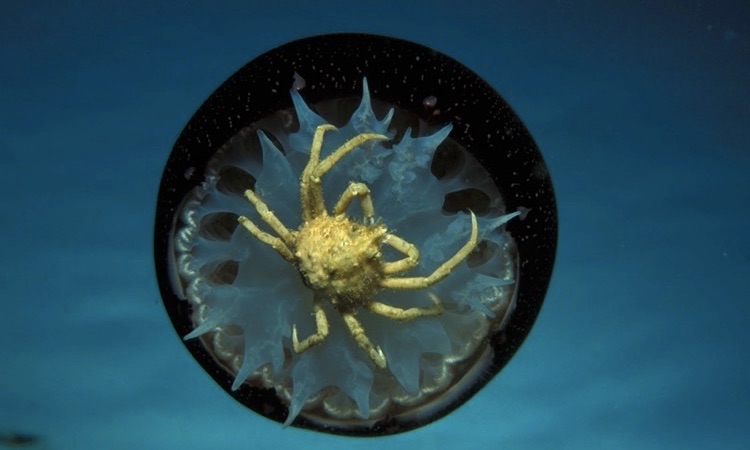Crabs have been around for over 200 million years, since the Jurassic period, and are members of the crustacean family.
In this article, we will explore the fascinating world of ocean crabs. From the common blue crab to the gigantic spider crab.
We’ll delve into their unique physical traits so you can better recognize them in person! Read on to learn more about the diverse range of crabs in the ocean.
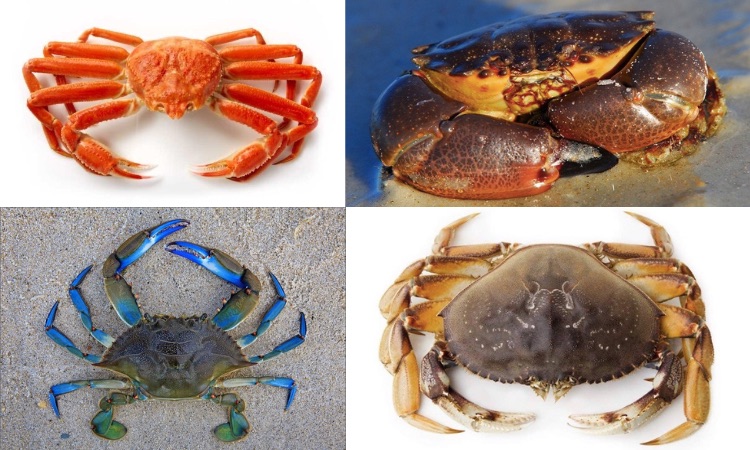
Crabs in the Ocean
There are literally thousands of different species of oceans crabs. So needless to say, too many for the scope of this article. We’ve selected the 8 most common type of crabs in the ocean. Find them below.
Blue Crab
The Blue Crab is a species of crab that is commonly found in the Atlantic Ocean. From New England to Florida, and in the Gulf of Mexico.
It is known for its distinctive blue color. Blue Crab considered one of the most important commercial seafood species in the United States.
The blue crab is a decapod crab. This means it has ten legs, with the two largest legs being used for capturing and manipulating prey. The Blue Crab is a versatile predator that feeds on a variety of prey including clams, oysters, mussels, and small fish.
It uses its sharp claws to crack the shells of its prey and extract the flesh. In addition to being a predator, the Blue Crab is also an important part of the food chain. It serves as a source of food for larger predators such as sea turtles, birds, and larger fish.
One of the most notable characteristics of the blue crab is its life cycle. Female Blue Crabs carry their eggs in a mass called a sponge that is attached to their abdomen.
After hatching, the larvae go through several stages of development before settling to the bottom to grow into juvenile crabs. As they grow, they molt their hard exoskeleton, and this process continues throughout their life.
The blue crab is a popular target for commercial and recreational fishing. The Blue Crab fishery is considered one of the most valuable in the United States, with an estimated value of $250 million annually.
Commercial fishing for blue crabs is conducted using traps, nets, and dredges. While recreational fishing is often done using crab pots and lines. Despite its commercial importance, the blue crab population is facing several threats including overfishing, habitat loss, and pollution.
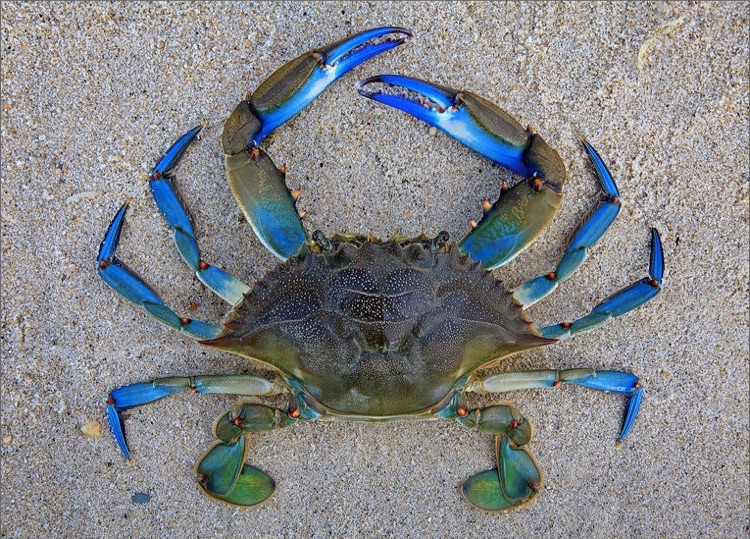
Dungeness Crab
The Dungeness Crab is a species of ocean crab that is found along the Pacific coast of North America, from Alaska to California.
This ocean crab is named after the town of Dungeness, Washington, where it was first harvested in the late 1800s. It is considered one of the most important commercial crab species in the United States. It is prized for its sweet, delicate flavor and tender meat.
The Dungeness crab is a decapod crab, meaning it has ten legs, and is typically 5-7 inches wide. It is known for its distinctive dark blue color, with white spots on its legs, and two large claws. The Dungeness crab feeds on a variety of prey, including clams, mussels, snails, and other small marine animals.
One of the most notable characteristics of the Dungeness crab is its life cycle. Female Dungeness crabs carry their eggs in a mass attached to their abdomen. After hatching, the larvae go through several stages of development before settling to the bottom to grow into juvenile crabs.
As they grow, they molt their hard exoskeleton, and this process continues throughout their life.
The Dungeness crab fishery is considered one of the most valuable in the United States, with an estimated value of $100 million annually.
Commercial fishing for Dungeness crabs is conducted using pots and traps. Recreational fishing is often done using crab pots and lines.
Despite its commercial importance, the Dungeness crab population is facing several threats, including overfishing, habitat loss, and pollution. To mitigate these threats, many states have implemented harvest restrictions and regulations aimed at protecting and conserving the Dungeness crab population.
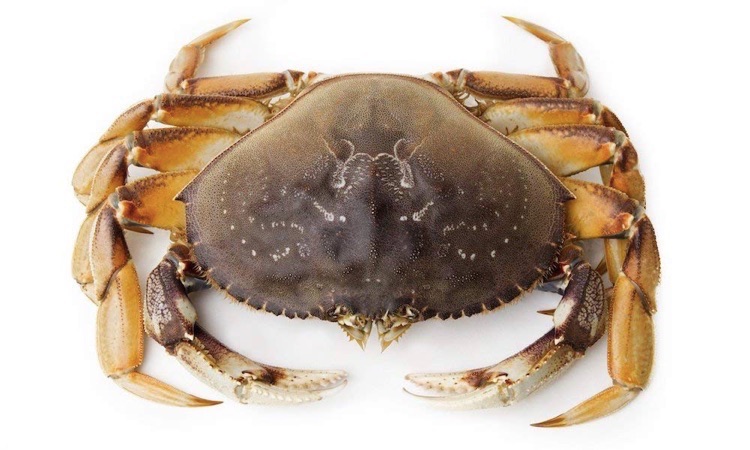
King Crab
The King Crab is a species of crab that is found in the Bering Sea and the North Pacific Ocean. The King Crab is one of the largest ocean crabs in the world and can grow up to 10 feet long from leg to leg and weigh over 20 pounds.
It is known for its distinctive red color, large size, and sweet, succulent meat. The King Crab is a predatory species that feeds on a variety of prey, including small fish, clams, and other crustaceans.
It uses its large claws to capture and manipulate its food, and its hard exoskeleton provides protection from predators. The King Crab is an important species in the marine food chain and serves as a food source for larger predators such as sea otters and seabirds.
The King Crab fishery is one of the most valuable in the United States. It has an estimated value of $250 million annually. Commercial fishing for King Crabs is conducted using traps and pots, and the crabs are often caught in deep waters in the Bering Sea.
Despite its commercial importance, the King Crab population is facing several threats, including overfishing, habitat loss, and pollution. To mitigate these threats, many states have implemented harvest restrictions and regulations aimed at protecting and conserving the King Crab population.
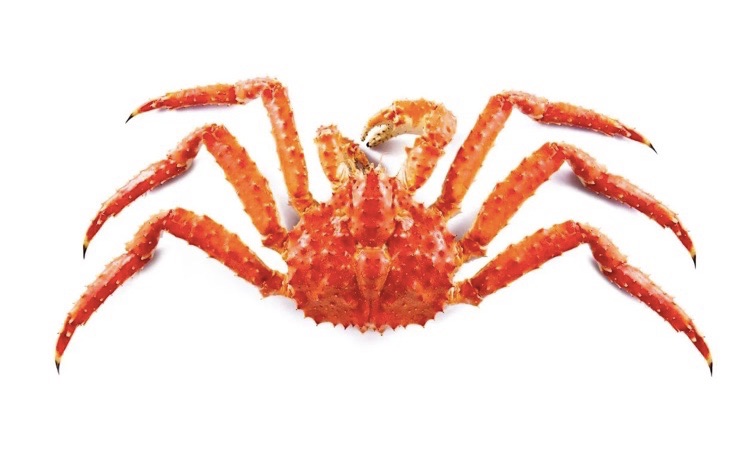
Snow Crab
The Snow Crab is a species of crab that is found in the North Atlantic and North Pacific Oceans. It is a commercially important species, prized for its delicate, sweet meat and high meat yield.
The Snow Crab is a smaller species of crab, typically growing to a width of 4-5 inches, and has long, spindly legs. It is named for its white color, which resembles snow.
The Snow Crab is a bottom-dwelling species that feeds on a variety of prey, including mollusks, small crustaceans, and algae. It is an important part of the marine food chain, serving as a food source for larger predators such as fish and seals.
The Snow Crab fishery is one of the largest in the world, with an estimated value of $2 billion annually. Commercial fishing for Snow Crabs is conducted using traps and pots, and the crabs are often caught in deep waters in the North Atlantic and North Pacific Oceans.
Despite its commercial importance, the Snow Crab population is facing several threats, including overfishing, habitat loss, and pollution.
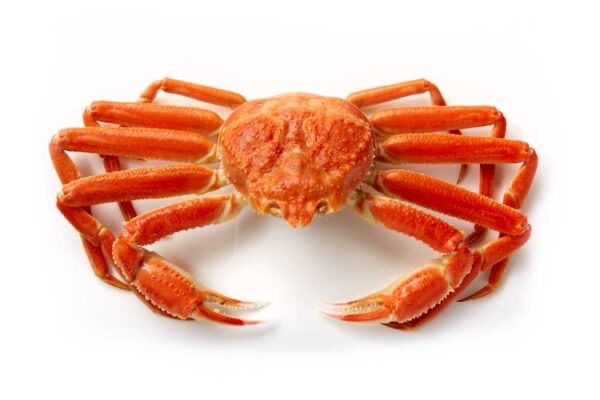
Stone Crab
The Stone Crab is a species of crab found along the Gulf of Mexico and the Atlantic coast of Florida, from Texas to North Carolina. It is known for its large, heavy claws, which are used for defense and to capture prey.
The Stone Crab has a hard exoskeleton, a reddish-brown color, and can grow up to 9 inches in width. Stone Crabs feed on a variety of prey, including mollusks, small crustaceans, and algae.
They are a significant predator in their habitat, playing an important role in maintaining the balance of the ecosystem.
The Stone Crab fishery is an important industry in the Gulf of Mexico and Florida, with an estimated value of $35 million annually. Commercial fishing for Stone Crabs is conducted using traps, and the crabs are harvested for their claws, which are considered a delicacy.
The crab claws are usually boiled and served with butter, lemon, and garlic. Despite its commercial importance, the Stone Crab population is facing several threats, including overfishing, habitat loss, and pollution.
To mitigate these threats, many states have implemented harvest restrictions and regulations aimed at protecting and conserving the Stone Crab population.
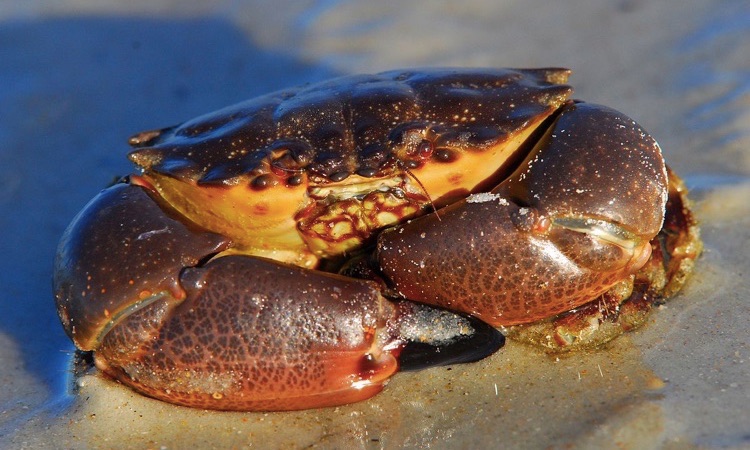
Horseshoe Crab
The Horseshoe Crab (Limulus polyphemus) is a species of arthropod that is found along the Atlantic coast of North America, from Florida to Maine. It is not a true crab but is related to spiders and scorpions.
The Horseshoe Crab is named for its horseshoe-shaped exoskeleton and is known for its distinctive, hard shell and long tail.
These ocean crabs feed on small invertebrates, such as clams, worms, and mollusks, and are important members of the ecosystem, serving as a food source for many species of birds and marine animals.
The species is also known for its role in the biomedical industry, as its blue blood contains a substance called Limulus amoebocyte lysate, which is used to test for bacterial contamination in medical equipment and vaccines.
The Horseshoe Crab population is facing several threats, including overharvesting, habitat loss, and pollution. To mitigate these threats, many states have implemented harvest restrictions and regulations aimed at protecting and conserving the Horseshoe Crab population.
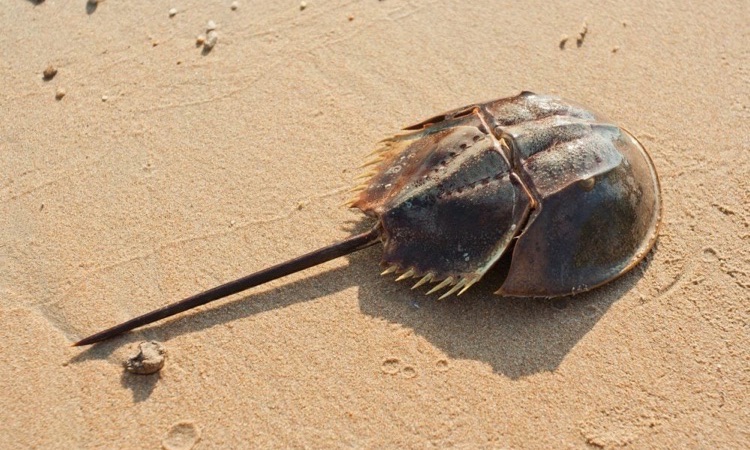
Fiddler Crab
The Fiddler Crab is a genus of small crabs that are found in tidal flats and marshes along the Atlantic and Gulf coasts of North America and in the western Pacific Ocean. They are named for the large, upraised claw that male fiddler crabs use to make a loud, fiddle-like sound to attract mates.
Fiddler Crabs feed on small bits of algae, detritus, and other organic matter found in the mud and sand. They play an important role in their tidal flat and marsh habitats, aerating the soil and providing a food source for other animals.
These ocean crabs are popular species for scientific research, particularly in the fields of ecology and behavior. They are also used as a food source for captive reptiles and birds, and in some regions, they are harvested for bait.
Despite their importance, Fiddler Crabs are facing several threats. These include habitat loss and degradation, pollution, and the introduction of non-native species. To mitigate these threats, conservation efforts are needed to protect and restore tidal flat and marsh habitats.
Spider Crab
The Spider Crab is a species of crab that is found along the Atlantic coast of Europe and the Mediterranean Sea. It is named for its long, spindly legs and is one of the largest species of crab, growing up to a leg span of up to 3 feet.
These ocean crabs feed on a variety of prey, including mollusks, small crustaceans, and algae. They are also known to scavenge dead animals and plants. The species plays an important role in its habitat. It servs as a food source for many other species of marine animals and helping to maintain the balance of the ecosystem.
Spider Crabs are commercially harvested for their meat, which is considered a delicacy in many countries. The meat is usually boiled or steamed and is often served in soups, stews, and pasta dishes.
Despite its commercial importance, the Spider Crab population is facing several threats, including overfishing, habitat loss, and pollution. To mitigate these threats, conservation efforts are needed to protect and restore the Spider Crab’s habitat and ensure the sustainability of the species.
